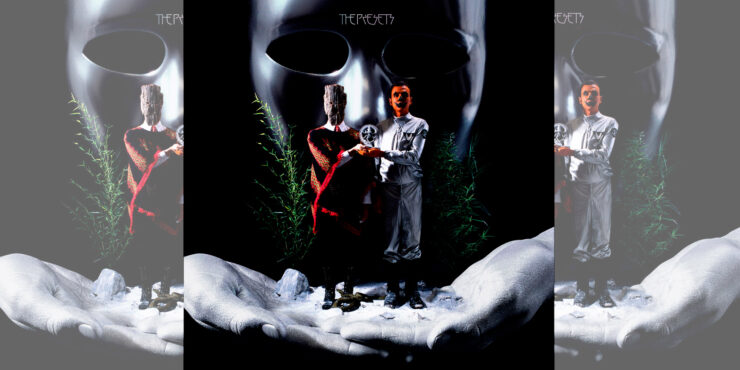Released on music legend David Bowie’s 69th birthday, his 25th studio album Blackstar defies all expectations. Two days after the release of this album, David Bowie passed away from an 18-month battle with cancer.
Neither his lengthy career of over 50 years, nor his age, have made this album uninspired, quiet, or boring. Instead, Bowie is relentless, giving the listener an insight into his brilliant mind and endless talent as a musician.
For his first studio LP in three years, Bowie teamed up with an NYC-based jazz trio led by saxophonist Donny McCaslin and long-time producer Tony Visconti, a legend in his own right. Blasts of saxophone weave in and out of songs, with McCaslin at times underpinning Bowie’s still-powerful vocals, and at other times taking centre stage.
Blackstar is his swan song, his parting gift to a world who adored and worshipped him for decades. It’s a fitting farewell, and may be one of the best rock albums produced in a long time. Bowie leaves us with comforting parting lines in “Lazarus”, letting the listener know that “Just like the bluebird/Oh, I’ll be free/Ain’t that just like me?”
“Lazarus” and the album-closer “I Can’t Give Everything Away” are easy-listening, jazz rock tracks, that feel like affectionate farewells to his fans, featuring lines such as “Look up here, I’m in heaven” in “Lazarus”. They shy away from the space-vibe that much of the album has, with soulful sounds that make them easy for any listener to get lost in.
If those two are for a wider audience on earth, then the almost 10-minute title track is music for another world. The song goes from a dark jazz flavour, to a sunny ballad, later returning to the darker drumbeat sound, and the music video for the track is even more disarming. The video is a short film of sorts, and features many eerie images, but one of the most notable is a skull that appears to be that of Major Tom turned into a macabre relic, thus completing the legacy of one of rock’s greatest characters.
Visconti’s masterful production pushes Blackstar into orbit—filled with electronic beeps, this album is reminiscent of Bowie’s space-themed early work such as Space Oddity (1969) and The Rise and Fall of Ziggy Stardust and the Spiders from Mars (1972). With his years of experience, Blackstar takes it to the next level, making it an unearthly album.
As Bowie has always been a genre-definer, and at times a genre-changer, he has always been adaptable, and has proven that he’s capable of taking what is popular and making it his own. “‘Tis a Pity She Was a Whore” has a definite indie rock vibe, and could easily blend in with the many indie bands dominating the airwaves today, save for the 1980s-esque saxophone solo.
It’s difficult to compare Blackstar fully to any other album, even those in Bowie’s own discography. Bowie proves he was still a man who could take the avant-garde and enthrall mainstream audiences with it. Are there weirder albums? Of course. But not from any artists with Bowie’s popularity.
For all the experimentation, Blackstar is not as inaccessible as it may first seem. It combines a multitude of genres, making it appealing to many different music-lovers. It’s a delight for jazz lovers, a treat for left-of-centre indie kids, and a new adventure for people who want a taste of art in their rock and roll.
Bowie croons on the title track that he is the “Great I Am”, and with this mind-blowing, genre-breaking final album, it would be difficult to challenge him on that. He has always been more than just the leader of the pack, and, forty-seven years after Major Tom first went up into space, David Bowie is still light years ahead of his contemporaries.
Thank you, David Bowie, for all that you have done. And as you’ve said, you may not know where you’re going, but it sure as hell will not be boring.






